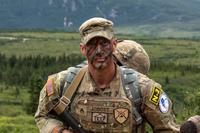Groundwater samples from March at Fort Detrick's Area B showed high concentrations of a cancer-causing chemical along the area's western edge, but the levels of detection at some of those wells has been slowly decreasing over the last decade.
During a meeting on Aug. 7 for Area B's Restoration Advisory Board (RAB), which is tasked with overseeing the remediation of Area B's contamination, the members viewed updated data on contaminants found in the groundwater.
Area B is a 399-acre section of the Maryland base that is detached from the main campus, between Kemp Lane and Shookstown Road. The section was used as a test site for the Army's biological warfare program in the mid-20th century.
After then-President Richard Nixon ended the program in 1969, scientists disposed of hazardous waste in unlined trenches and pits within Area B, leading to groundwater contamination.
Army scientists have spent decades studying the contamination and the extent to which it has spread.
In 2009, the U.S. Environmental Protection Agency designated the groundwater at Area B as a National Priorities List Superfund site.
A Superfund site is a location that has been contaminated with hazardous waste that poses risks to the environment and human health. The EPA designates Superfund sites and places them on the National Priorities List.
John Cherry, a presentative of the contractor Arcadis, presented information on Area B's contamination to the RAB. He said that in particular, three wells around the western disposal area show the highest levels of trichloroethylene, or TCE, of all the wells sampled on Area B.
The rest of the wells in comparison show dramatically lower TCE detections.
TCE can be found in consumer products like automobile brake cleaners, furniture care, and arts and crafts spray coating. Prolonged exposure to TCE can cause kidney cancer and increased risks for other cancers, according to the National Cancer Institute.
Area B TCE Trends Through March 2024
Cherry said these findings have been consistent with TCE detections from previous years and pointed out that for one of these wells, which had notably higher detections in the 2010s compared to other wells, it has seen a general downward trend over time.
Currently, Area B is in the remedial investigation phase of the Superfund process.
Once the investigation is done, which should be completed within the next year and a half, according to Fort Detrick's Environmental Division Chief Joseph Gortva, an investigation document can be made.
(c) 2024 The Frederick News-Post (Frederick, Md.)
Visit The Frederick News-Post (Frederick, Md.) at www.fredericknewspost.com
Distributed by Tribune Content Agency, LLC.











